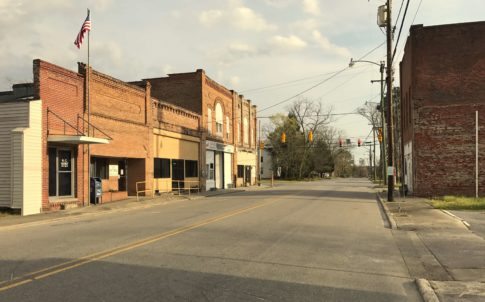Unemployment rates in NC increased in Spring 2020

Over the past year, the economic impact of COVID-19 has been at the forefront of pandemic response and state-wide reopening plans. In March 2020, businesses across the country closed – some of which have never reopened – resulting in unemployment levels that surpassed unemployment rates of the Great Recession in 2008.
Although unemployment rates have improved, they have not fully recovered from a year ago. Those living in the U.S. have had to increasingly rely on unemployment insurance after losing their jobs.

According to the United States Department of Labor, unemployment insurance claims in North Carolina peaked in April 2020 with over 478,000 claims. This contrasts to roughly 10,000 claims made in February 2020, right before the pandemic hit. Unemployment claims remained above 100,000 a month until August 2020. As of February 2021, over 39,000 claims were made, nearly four times as high as pre-COVID levels.
The unemployment rate in North Carolina peaked in April 2020 at 13.5%, over two percentage points higher than the peak rate during the Great Recession in April 2009. As of February 2021, the unemployment rate had lowered to 5.7%. However, North Carolina’s rate in February 2020 – immediately prior to the lockdown – was 3.6%.
The economic impacts of the pandemic are more broadly felt than just those who have lost their jobs entirely. Data from the Census Bureau’s Household Pulse Survey suggest that one year after the onset of COVID-19 in March 2020, 42.7%of North Carolinians reported a loss of employment income. These impacts were disproportionately felt by Hispanic/Latino and Black individuals (60.6% and 48.6%, respectively). However, North Carolina’s loss of employment income has been consistently lower than the U.S. national rate (46.3%).
The U.S. Census Bureau’s Household Pulse Survey (HPS) is an ongoing survey to track the impacts of the COVID-19 pandemic on the lives of people in the United States. It is an experimental data product that was developed and implemented rapidly to deliver data about pressing issues to policymakers so that they could make decisions quickly.
The HPS represents a collaboration between the U.S. Census Bureau and multiple federal agencies, including the Centers for Disease Control. The HPS began on April 23, 2020 and will continue through December 2021. The questionnaire has changed over time to reflect the evolving pandemic.
Because it is an experimental data product, the HPS data may not meet all the high standards of data quality and statistical reliability of traditional Census Bureau data. In particular, the State Health Access Data Assistance Center (SHADAC), notes that the HPS has relatively low response rates (7-8%) and is an internet-based survey, with individuals invited to participate by email and text message. SHADAC emphasizes that “these issues in particular could be potential sources of bias but come with tradeoffs of increased speed and flexibility in data collection as well as lower costs.”
To help data users, the Bureau releases detailed documentation on the methodology of the Household Pulse Survey and the standard errors of the estimates. In particular, the Census Bureau advises that there are “potentially serious data quality issues related to sampling error” when the coefficient of variation (standard error divided by the estimate) is 30% or more. Based on this guidance, we are only presenting data where the coefficient of variation for the estimate is less than 30%.
Need help understanding population change and its impacts on your community or business? Carolina Demography offers demographic research tailored to your needs.
Contact us today for a free initial consultation.
Contact UsCategories: Economic Data

The Center for Women’s Health Research (CWHR) at the University of North Carolina School of Medicine released the 12th edition of our North Carolina Women’s Health Report Card on May 9, 2022. This document is a progress report on the…

Dr. Krista Perreira is a health economist who studies disparities in health, education, and economic well-being. In collaboration with the Urban Institute, she recently co-led a study funded by the Kate B. Reynolds Foundation to study barriers to access to…

Our material helped the NC Local News Lab Fund better understand and then prioritize their funding to better serve existing and future grant recipients in North Carolina. The North Carolina Local News Lab Fund was established in 2017 to strengthen…
Your support is critical to our mission of measuring, understanding, and predicting population change and its impact. Donate to Carolina Demography today.